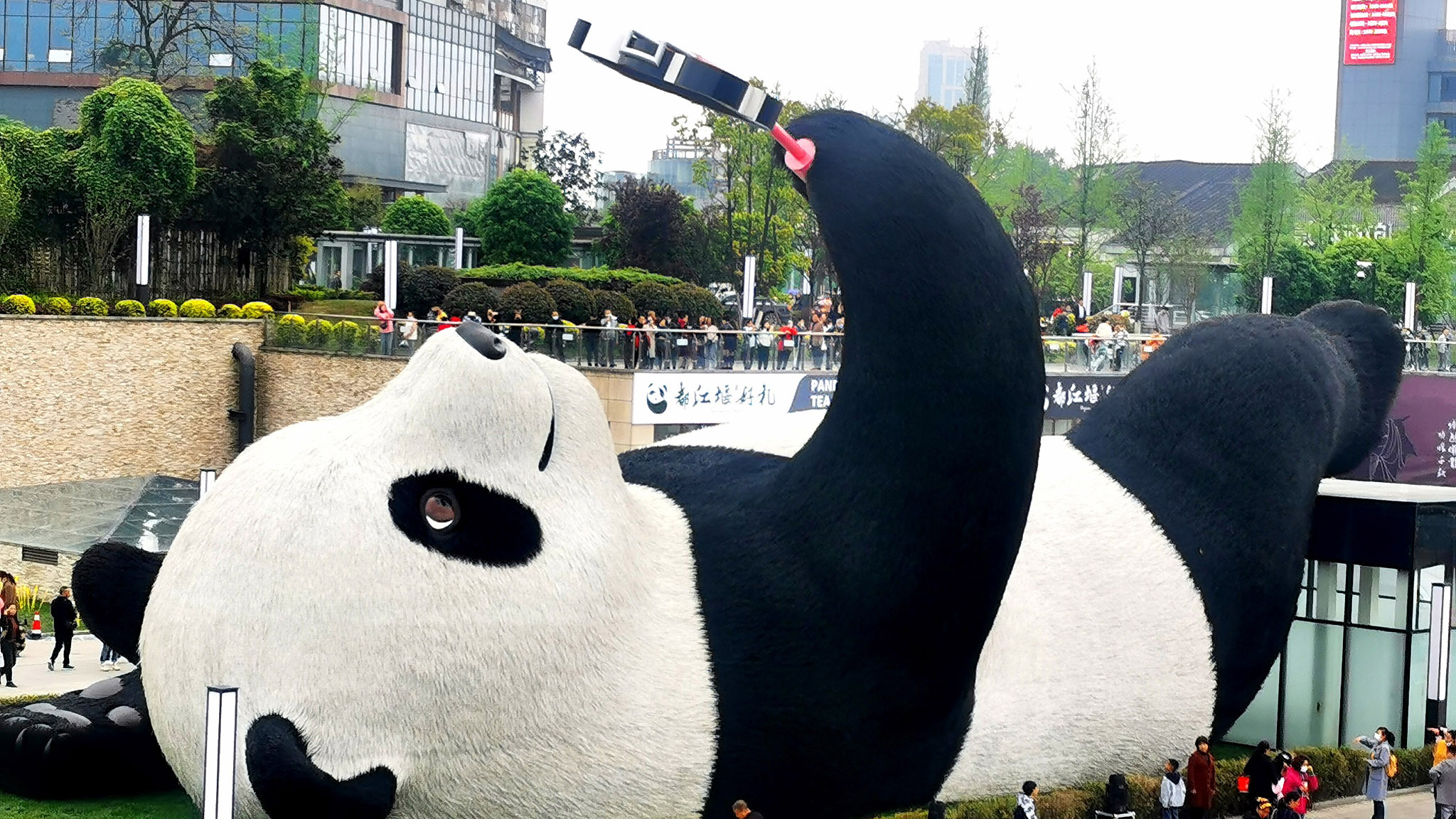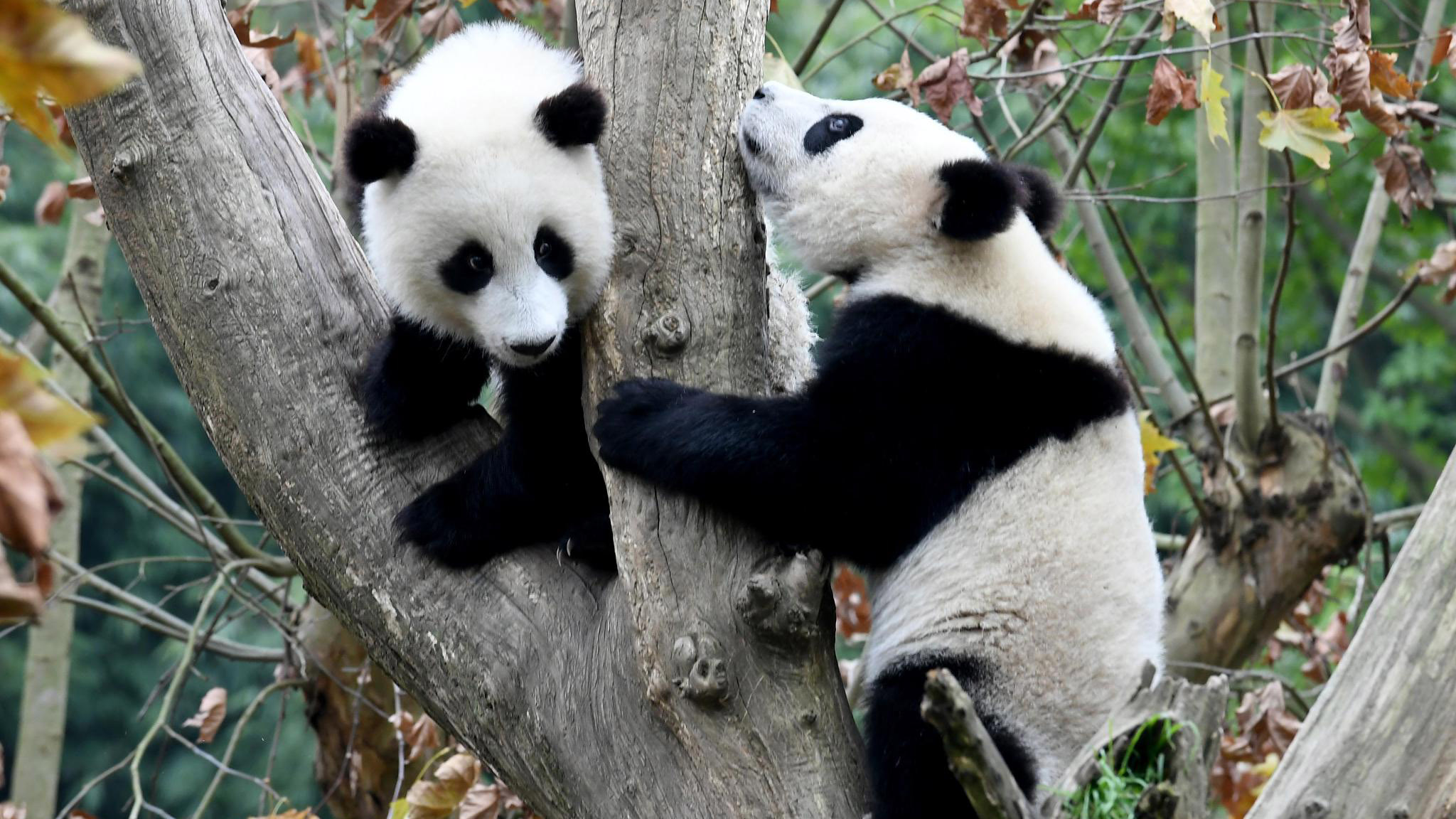
The "selfie panda" in Dujiangyan City, April 4, 2021. /VCG
The "selfie panda" in Dujiangyan City, April 4, 2021. /VCG
In Dujiangyan, a county-level city in Sichuan Province, a 130-tonne panda takes a selfie of itself lying on its back in the Yangtianwo Square. Of course, the "selfie panda" is not real. It is a sculpture designed by a Dutch artist who was inspired by a real panda that went astray in downtown Dujiangyan in 2005.
Sitting on the northwest edge of Chendu Plain, the Minjiang River runs across Dujiangyan. The abundant forests and rivers provide pandas with an ideal place to flourish. In the summer of 2005, people drinking beer beside the Yangtianwo water gate spotted a panda at around 3:30 a.m. Like in the movie "Kung Fu Panda," the stray panda climbed over a wall and broke the silence of the downtown city.

Two giant pandas in the Dujiangyan Pand Park, December 2, 2019. /VCG
Two giant pandas in the Dujiangyan Pand Park, December 2, 2019. /VCG
After eight hours of rescue work, the first wild panda that entered the city was finally returned to nature, a testament to the weight given to panda protection in the country. Today, there are two giant panda conservation centers in Dujiangyan: the Dujiangyan Panda Valley and the Dujiangyan Panda Park.

Panda-shaped steamed buns in Dujiangyan, March 12, 2021. /VCG
Panda-shaped steamed buns in Dujiangyan, March 12, 2021. /VCG
As a city with the largest number of pandas per capita, the pandas not only exist in the conservation centers but also in the city. The sculpture in the Yangtianwo Square is a glimpse of the panda culture in Dujiangyan. From the architecture and transportation to food, panda elements are everywhere.
(Cover image via VCG)
(If you want to contribute and have specific expertise, please contact us at nature@cgtn.com.)

